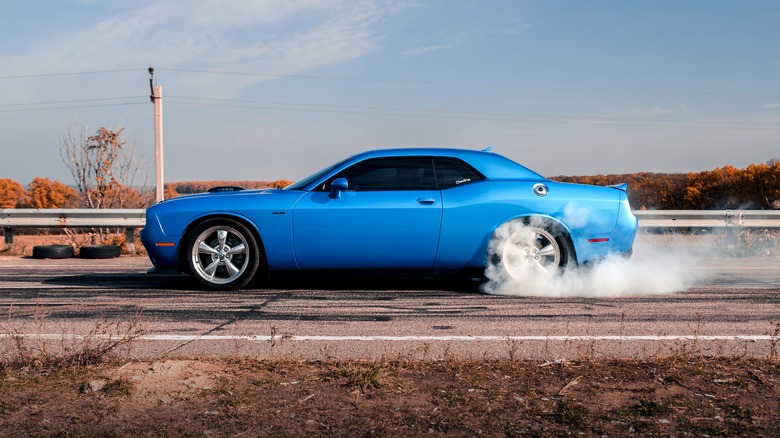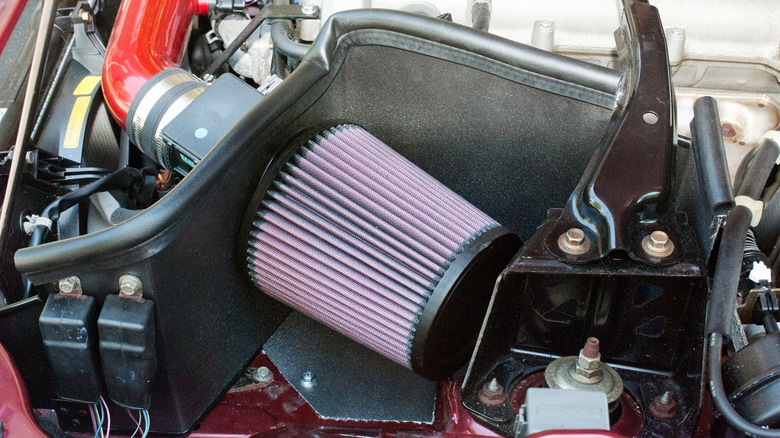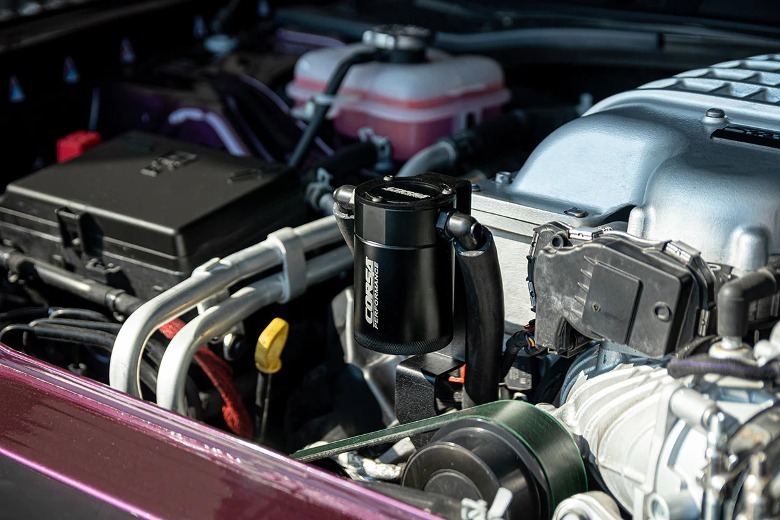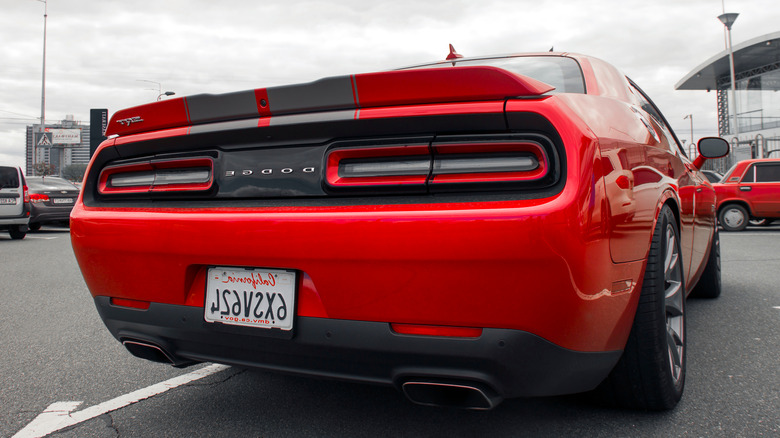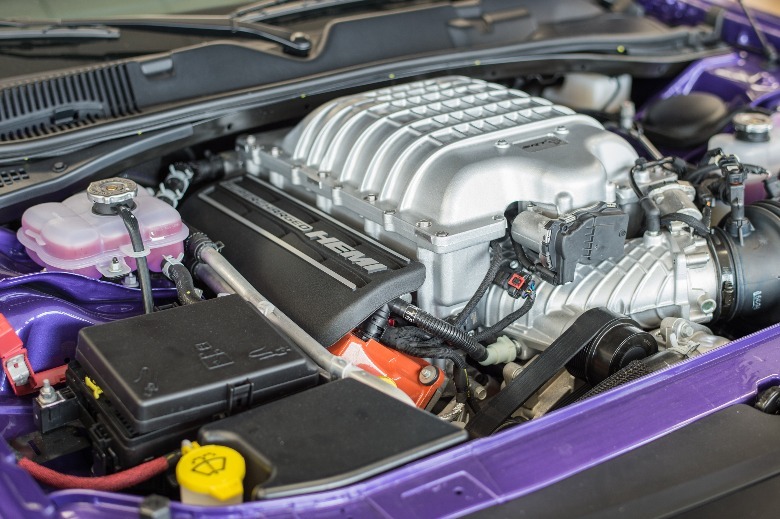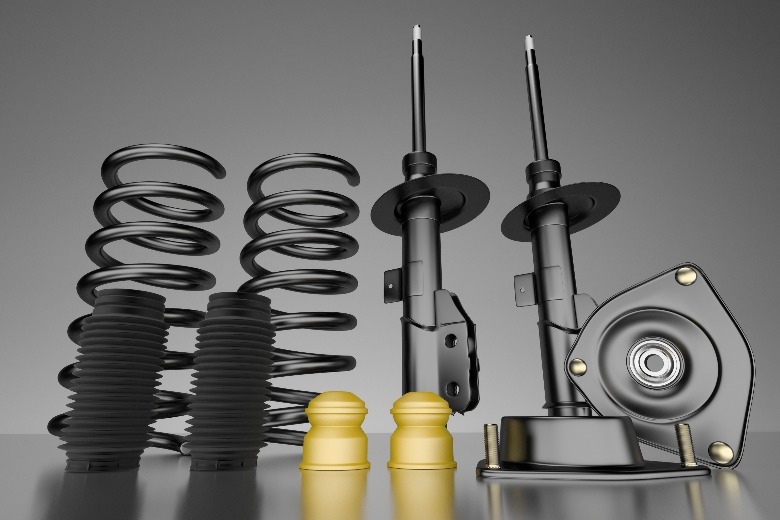The 5 Best Dodge Challenger Bolt-Ons To Add More Power
2023 is the final model year of Dodge's iconic Challenger and Charger muscle cars. First introduced in 1969 as a late-entrant competitor to the first-gen Ford Mustang, the modern third-gen Challenger debuted in 2008 and is available in many engine options. The crème of the crop are the Challenger SRT Hellcat with its 717-horsepower 6.2-liter supercharged V8, the SRT Hellcat Redeye with 797 horsepower, and the SRT Super Stock with its updated 807-horsepower supercharged V8.
The final last call Challenger, the Demon SRT 170, lords over all Challengers old and new with its astonishing 1,025 horsepower supercharged V8. However, there's a problem: Factory-supercharged Dodge Challengers start at about $74,000, and a 2023 Challenger SRT Super Stock rings above $90,000.
The good news is that a base Challenger SXT and GT (3.6-liter V6, 303 horsepower, and 268 lb-ft of torque) starts below $36,000. On the other hand, a Challenger R/T and R/T Scat Pack (372-horsepower 5.7-liter V8 and a 485-horsepower 6.4-liter V8) go for $41,000 and $48,000, respectively. The V6 and V8 Challenger may not have the rousing horsepower figures of its supercharged yet exotically-priced brethren. Still, it also means both are ripe for a set of bolt-on aftermarket parts to yield more power, torque, and faster times at the drag strip.
Cold air intake
The stock air filter and air box in a Dodge Challenger are good enough for street driving. However, you could unlock more performance by installing a cold air intake kit. A cold air intake allows more cold air to burn inside the combustion chamber. And since colder air is denser than hot air, more oxygen means a more substantial burn in every combustion cycle, unlocking 13 to 28 more horses with a simple bolt-on installation.
There's more. Installing a cold air intake to a V6 or V8 Dodge Challenger results in a more exhilarating intake sound every time you drop the pedal. In addition, cold air intakes typically come with washable and reusable air filters, saving you money on both time and maintenance while helping rid the environment of commercial waste.
Oil catch can
While an oil catch can will not necessarily add more power and torque, it prevents pre-ignition, knocking, and power loss to keep your V6 or V8 Challenger in tip-top shape. Furthermore, direct-injected engines would benefit most from an oil catch can to prevent the harmful buildup of gunky contaminants in the intake system.
Despite not being an official performance-enhancing bolt-on mod, the filtering capabilities of an oil catch can (or oil separator) help reduce blow-by and prevent harmful sludge on the intake manifold. The best part is oil separators are relatively inexpensive and easy to install.
Catback exhaust
Axle-back exhaust kits for the Dodge Challenger are more affordable and easier to install. But if you have more money to burn (around $514 to about $2,000), cat-back exhaust kits yield better results and noticeable performance, sound, and aesthetic improvements. Cat-back exhausts extend from the catalytic converters (hence the name "cat-back") to the muffler tips and typically consist of larger diameter mid-pipes, mufflers, tailpipes, and the necessary hardware.
Aftermarket cat-back exhaust kits produce many benefits to enthusiastic muscle car owners. They not only unleash a more powerful exhaust sound but also help prevent backpressure at higher revs, enabling the motor to unleash consistent power across the rev range.
Performance headers
Cat-back exhausts work best when combined with performance headers. Both help to improve airflow while significantly reducing back pressure, a buildup of spent gasses in the exhaust manifold that dramatically affects efficiency, performance, and acceleration. Installing a bolt-on set of performance exhaust headers means each cylinder receives an allocated exhaust pipe to prevent or eradicate backpressure.
Lowering springs
Lowering springs have nothing to do with the engine and would not help increase horsepower and torque. What it does, however, is lower the center of gravity, a necessary ingredient to improve the handling and steering feel. And since a car that handles and steers better could go faster, lowering springs brings many benefits with a single drawback: A stiffer ride.
And since Dodge Challengers are not precisely the paradigm of sporty handling, installing a set of aftermarket lowering springs will reduce body roll, squatting, and nose dive when driving aggressively. When choosing lowering springs, there are two types: Linear and progressive. The former is ideal for the dragstrip with its consistent spring rates, while the latter is better for the street and provides a more comfy ride.
